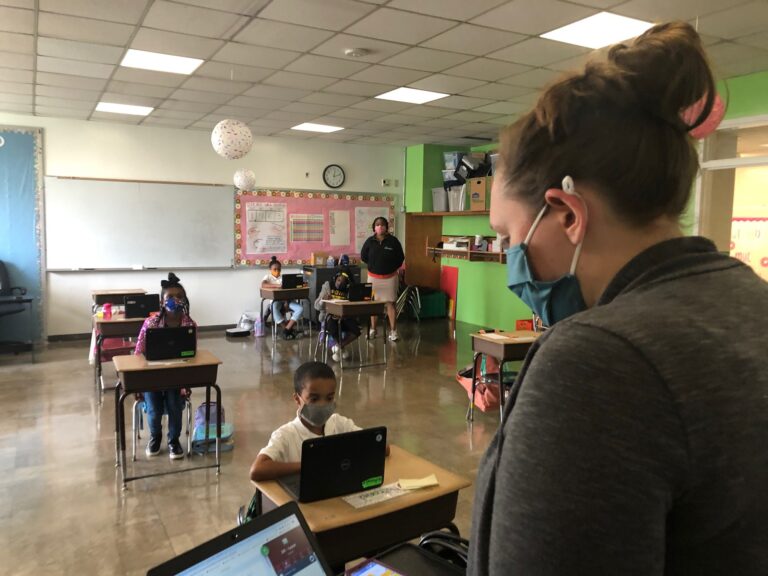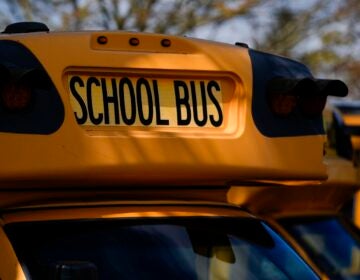Gov. Carney urges Delaware schools to move from remote to hybrid learning
The governor and his top public health and education administrators say schools have not proven to pose a serious risk for coronavirus transmission.

Gov. Carney is urging Delaware schools to transition from remote to hybrid teaching, saying schools have not proven to be a serious risk for spreading COVID. (Cris Barrish/WHYY)
Ask us about COVID-19: What questions do you have about the current surge?
Declaring that Delaware schools were not a serious coronavirus risk for students and staff, Gov. John Carney “strongly” urged educators to return to hybrid learning on January 11.
“The risk of contracting the virus in school is low compared to the risks students face not being in school,’’ Carney wrote in a letter also signed by state public health director Dr. Karyl Rattay and education secretary Susan Bunting.
Carney’s letter also noted that the American Academy of Pediatrics and others “have repeatedly pointed to the negative effects on children – especially our most vulnerable children – when they aren’t able to attend school in person. In addition to the more robust and engaging instruction that in-person learning allows, many students rely on schools for meals, counseling, and social and emotional support.”
Carney’s push to have schools implement the hybrid model — a mix of online and in-school education — represents a shift from his previous position that schools should choose whether to go online only or use hybrid learning to balance the needs of teaching students and protecting them from the coronavirus.
He wants schools that have only been remote to move to hybrid on the same day he plans to lift his nearly monthlong stay-at-home advisory.
Since K-12 classes began in early September, a total of 579 of the approximately 161,000 Delaware students in public and private schools have tested positive, according to an enhanced COVID-19 contagion website the state just launched. In addition, 546 staff members have tested positive.
“Data from our epidemiologists shows that the vast majority of cases affecting students and staff originated outside of the school building,’’ the governor’s letter said. “The few cases thought to result from in-school spread are frequently observed to be in settings where mask wearing was not consistently practiced.”
Schools were back in session this week after what was a two-week holiday break, which gave “teachers and administrators a chance to recharge, reorganize, and get ready for the rest of the school year,’’ Carney wrote.
He pointed out that under U.S. Centers for Disease Control and Prevention guidelines, school personnel who have come into close contact with a person with COVID-19 now must only quarantine for 10 days, or seven days with a negative test on the fifth day or later. The quarantine time had previously been 14 days.
“This means that school personnel will be able to return to work in half the time, which should mitigate the staffing shortages.”
While Carney wants all students in hybrid status, while allowing students who want remote-only learning to do so.
However, for districts and schools that don’t opt for that model, he proposed two other options.
The first is to have high schools fully remote with elementary and middle schools in hybrid status.
The second is to shift high schools and middle schools to fully remote and have elementary schools, students with special needs, English learners, low-income students, and students with internet connectivity challenges in hybrid status.

Get daily updates from WHYY News!
WHYY is your source for fact-based, in-depth journalism and information. As a nonprofit organization, we rely on financial support from readers like you. Please give today.




![CoronavirusPandemic_1024x512[1]](https://whyy.org/wp-content/uploads/2020/03/CoronavirusPandemic_1024x5121-300x150.jpg)


